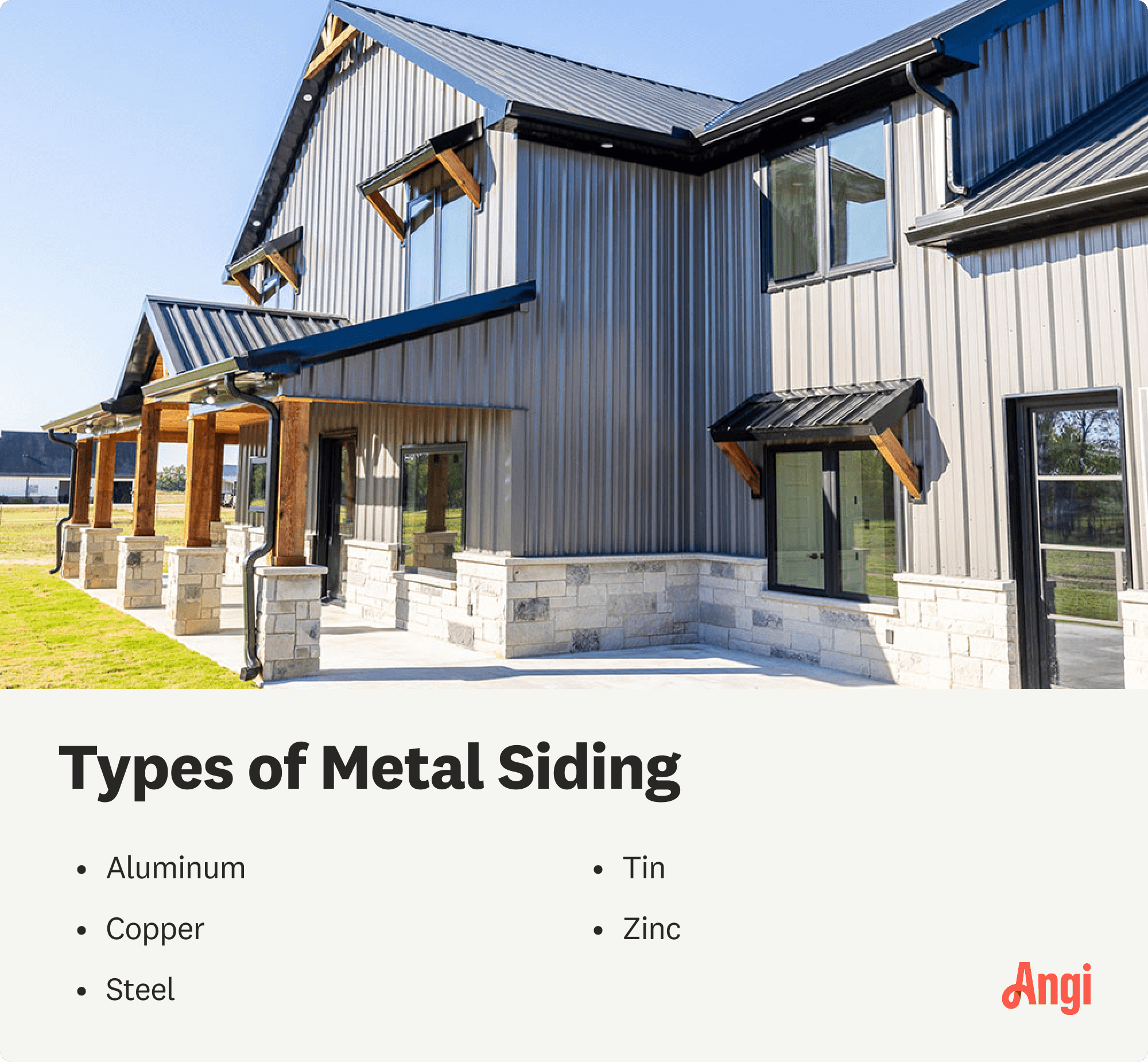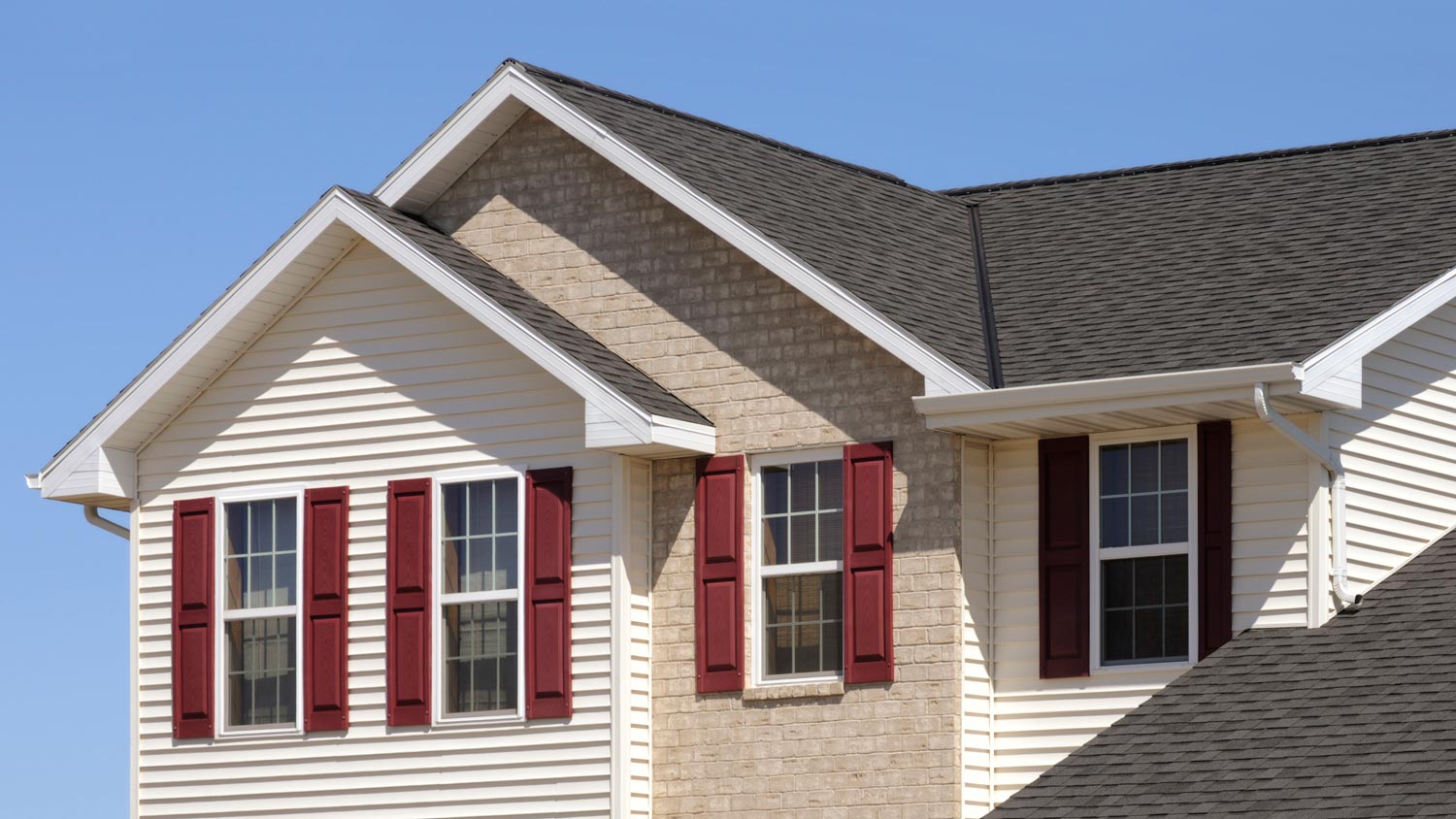How Much Does Aluminum Siding Cost? [2025 Data]
Installing aluminum siding costs an average of $11,750, but the prices can range between $4,500 and $19,000 depending on the size of your home and the siding style.


Aluminum siding is a popular type of metal siding and is an excellent option for those looking to up one of the layers of protection for the home while adding curb appeal at the same time. Homeowners should expect to pay around $11,750 for aluminum siding installation. But, depending on if you decide to paint the siding, the size of the home, and whether or not you need to remove the previous aluminum siding, you should expect to pay anywhere from $4,500 to $19,000.
Aluminum Siding Cost Factors

There are two main options for aluminum siding: wood-mimicking (longboard) aluminum siding and simple (corrugated) aluminum siding. Which one you choose could mean the difference between paying $3 and $18 per square foot, so let’s break down each type of aluminum siding.
Size of Home

Of course, more square footage will increase the amount of material needed to complete the project. But you’ll also need to consider how many stories your home has and the ease of installation on the home. Those with a split level or a garage underneath the home might not have more stories, but the siding is still there.
Typical pricing for different square footage homes will be around:
| Size of Home by Square Footage | Typical Price |
|---|---|
| 500-square-feet | $1,500–$3,750 |
| 1,000-square-feet | $2,250–$5,250 |
| 1,500-square-feet | $4,500–$11,000 |
| 2,000-square-feet | $6,000–$14,500 |
| 2,500-square-feet | $7,500–$19,000 |
Type
| Type of Aluminum Siding | Cost per Square Foot | Description |
|---|---|---|
| Longboard | $14–$18 | Only horizontal boards; usually for custom homes |
| Corrugated | $3–$7 | Vertical or horizontal boards; available for all homes |
While you can install siding yourself, we recommend contacting a pro. Improper installation can decrease the life span of the siding and cost more money in the long run.
Materials
When figuring out how to install aluminum siding, you must plan for more than just the siding. You’ll also need to redo the flashing around the home, install caps on corners, and even replace the soffit of the home. Each of these items will start to add up, so expect these extra costs with this project:
| Materials | Cost |
|---|---|
| Flashing | $1–$1.50 per linear foot |
| Corner caps | $10–$15 per cap |
| J-channels | $5–$10 per channel |
| Soffits | $8–$20 per linear foot |
| Gutters | $5–$30 per linear foot |
| Exterior trim | $10–$15 per linear foot |
Painting
This is an optional step, but you can choose to paint your aluminum siding to really have your neighbors jealous. The average cost to paint aluminum siding will be anywhere from $2,250 to $8,500. However, this does depend on the size of the home as well as what type of paint you choose to use.
Labor Cost
Hiring a siding contractor costs anywhere from $1 to $4 per square foot or $1,500 to $6,000 total. While some contractors charge an hourly rate of $50 to $200 per hour depending on location, charging by the square foot can help you anticipate your labor costs since your rate is fixed.
Existing Siding Removal
Have an older wooden or vinyl siding that you want to be kicked to the curb? Expect to pay anywhere from $1.75 to $ 3.75 per square foot for existing siding removal. Though you may also need to rent a dumpster for debris, which may add an extra $150 to $300.
Permits
Installing new aluminum siding requires a building permit, which your siding contractor will pull for you. You can expect a construction permit to cost $500 to $2,000, depending on your location and the extent of the project. Consult your siding contractor about permits before starting any work on your siding.
Cost to Install Aluminum Siding Yourself
If you know how to install aluminum siding on a house, have experience tackling siding projects, and know your way around a ladder, you can install aluminum siding yourself. But it’s important to remember that installation should ideally be handled by professionals, even if you have some DIY skills.
To ensure a proper and long-lasting installation, it's highly recommended to contact a local metal siding contractor who has the necessary expertise and experience to handle the project efficiently. While it may involve additional costs for hiring a professional, it's a worthwhile investment to achieve a high-quality and visually appealing result.
DIY vs. Hiring a Pro
Hiring an experienced contractor will cost you between $1,500 and $6,000 in labor costs. Though this is no small investment, attempting to DIY siding can increase your immediate and long-term expenses.
For one, despite being lighter than other siding options like zinc siding, steel siding, and fiber cement siding, aluminum siding still carries a decent weight and can be challenging to handle correctly. Improper installation can lead to various structural issues, such as incorrect alignment, gaps, or even damage to the siding itself. Hiring a pro can help lower how frequently you repair your aluminum siding.
Secondly, installing aluminum siding incorrectly can also cause leaks or pest issues that affect the structural integrity of your home. Water damage typically comes with a high price tag, so it’s best to prevent water remediation measures by being proactive about installing your siding correctly the first time.
Additional Projects to Consider
During or after installing aluminum siding, there are several additional projects to consider that can enhance the overall appearance, durability, and functionality of your home. Some of these projects include:
Insulation: Consider adding insulation beneath the aluminum siding to improve energy efficiency and reduce heating and cooling costs.
Soffit and fascia installation: Installing matching soffit and fascia can provide a finished look and protect the eaves and roof edges from weather damage.
Gutter installation: Adding gutters and downspouts can help divert water away from the siding, preventing water damage and prolonging the life span of the siding.
Trim and accents: Incorporating trim and accents, such as corner posts, window and door surrounds, or decorative elements, can add visual interest and enhance the architectural style of your home.
Painting: While aluminum siding is typically pre-finished, you may choose to paint or repaint it to update the color or refresh its appearance.
How to Save Money When Installing Aluminum Siding
A great way to save money is by carefully comparing quotes from different contractors. Don't be afraid to ask for at least three quotes and compare them side by side. This will not only give you a better sense of the pricing trends in your area, but it will also help you identify the most cost-effective option.
Additionally, if you're not sure about whether to remove siding through a separate company or to have the siding contractors do it, consider asking about any discounts or promotions that may be available for bundled services.
Other considerations:
Partial siding installation: If replacing the siding across your entire home is out of budget, some homeowners opt to replace only the front-facing part of the house and keep the existing siding on the back of the home. Keep in mind you won’t get the full ROI of a siding upgrade, plus you risk the siding aging at different rates.
Remove old siding yourself: Doing some of the demolition yourself saves time, but only do this if you’re comfortable on a ladder and handling heavy materials.
Save on materials: Aluminum siding is one of the less expensive materials to begin with, but you can opt for the lower end of the range when selecting materials.
How Angi Gets Its Cost Data
Home is the most important place on earth, which is why Angi has helped more than 150 million homeowners transform their houses into homes they adore. To help homeowners with their next project, Angi provides readers with the most accurate cost data and upholds strict editorial standards. We extensively research project costs to develop the pricing data you see, so you can make the best decisions for you and your home. We rely on reputable sources, including the U.S. Bureau of Labor Statistics, academic journals, market studies, and interviews with industry experts—all to ensure our prices reflect real-world projects.
Want to help us improve our cost data? Send us a recent project quote to costquotes@angi.com. Quotes and personal information will not be shared publicly.
Frequently Asked Questions
The three main types of paint you can use on aluminum siding are acrylic latex paint, self-etching primer, and acrylic paint. Experts say acrylic latex paint offers the best results because it often lasts longer and is easy to clean aluminum siding without removing any of the paint. You need to paint your aluminum siding every 5 to 10 years.
Aluminum siding will last around 40 years on average. With proper maintenance, such as applying paint and maintaining seals to prevent rusting, you may see upwards of 50. Warmer climates may see a decrease in life span because of the potential of warping. Coastal homes tend to have a harder time with aluminum siding holding up over the years because aluminum is susceptible to saltwater damage and requires more upkeep to maintain.
The ROI on aluminum siding is usually around 70%. So if your aluminum siding costs around $10,000 on average, you should expect a $7,000 increase in the value of your home. However, constantly repainting the aluminum siding will cut into this ROI.
Aluminum siding isn't the only type of siding material on the market for giving your home's exterior a makeover. Alternatives to aluminum siding include vinyl siding, wood siding, composite siding, and brick veneer siding. Each siding material comes with strengths and weaknesses that could influence your decision based on your particular circumstances, so it's important to look into each type as they pertain to your home and lifestyle before deciding.
A popular competitor to aluminum siding is vinyl siding, which has a similar price and is lower maintenance but comes with a shorter life span.
















